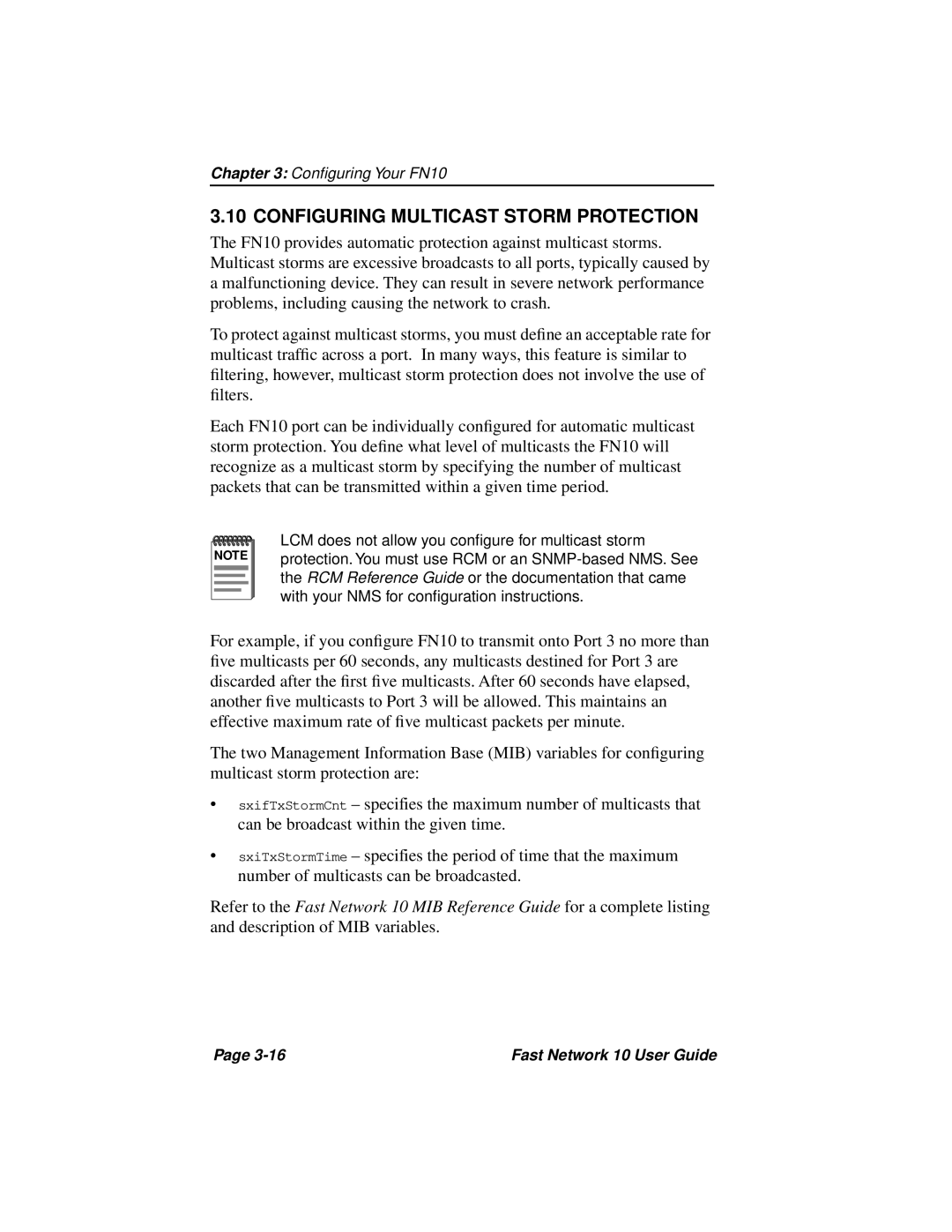
Chapter 3: Configuring Your FN10
3.10 CONFIGURING MULTICAST STORM PROTECTION
The FN10 provides automatic protection against multicast storms. Multicast storms are excessive broadcasts to all ports, typically caused by a malfunctioning device. They can result in severe network performance problems, including causing the network to crash.
To protect against multicast storms, you must define an acceptable rate for multicast traffic across a port. In many ways, this feature is similar to filtering, however, multicast storm protection does not involve the use of filters.
Each FN10 port can be individually configured for automatic multicast storm protection. You define what level of multicasts the FN10 will recognize as a multicast storm by specifying the number of multicast packets that can be transmitted within a given time period.
NOTE |
LCM does not allow you configure for multicast storm protection. You must use RCM or an
For example, if you configure FN10 to transmit onto Port 3 no more than five multicasts per 60 seconds, any multicasts destined for Port 3 are discarded after the first five multicasts. After 60 seconds have elapsed, another five multicasts to Port 3 will be allowed. This maintains an effective maximum rate of five multicast packets per minute.
The two Management Information Base (MIB) variables for configuring multicast storm protection are:
•sxifTxStormCnt – specifies the maximum number of multicasts that can be broadcast within the given time.
•sxiTxStormTime – specifies the period of time that the maximum number of multicasts can be broadcasted.
Refer to the Fast Network 10 MIB Reference Guide for a complete listing and description of MIB variables.
Page | Fast Network 10 User Guide |
